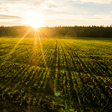- Home >
- Our Actions >
- Ambassador report
11
Comments
Soil Erosion in Tigray and conservation attempts to avert the damage. |
|---|
|
Land degradation is a major cause of poverty in rural areas of developing countries. In many areas, farming populations have experienced a decline in real income due to demographic, economic, social, and environmental changes. Land degradation is a result of several factors of both physical and socio-economic nature. The immediate consequence of land degradation is reduced crop yield followed by economic decline and social stress. The integrated process of land degradation and increased poverty has been referred to as the "downhill spiral of unsustainability" leading to the "poverty trap" . Soil erosion is one facet of land degradation that affects the physical and chemical properties of soils. The physical parameters are primarily organic matter content, structure, texture, bulk density, infiltration rate, rooting depth, and water-holding capacity. Changes in chemical parameters are largely a function of changes in physical composition. The consequences of topsoil erosion on soil productivity depends on the depth and quality of the topsoil relative to the subsoil. In areas where the topsoil is acid and the organic matter content is initially low, surface erosion may, in fact, increase crop yields due to the exposure of a more favourable subsoil. Tigray is the northern region of Ethiopia (Fig. 1). It consists of several agro-climatic zones, determined mainly by altitude, rainfall and temperature. The eastern parts of the region, including the Danakil depression, are extremely dry. The highlands of central Tigray vary in altitude from about 1 300 m to over 3 000 m in the highland areas of Adwa. Most parts of Degua Tembien and parts of Abergelle have rolling to hilly high plateaus. Most of the areas between 1 500 and 2 300 m have an annual rainfall of less than 900 mm. Rainfall in the area is unpredictable, and it is quite common to observe both water logging and drought during one cropping season. The population density in the region is relatively high, and small units of land are extensively cultivated by subsistence farmers. The aim of soil conservation is to facilitate optimum level of production from a given area of land while keeping soil loss below a critical value. The soil loss tolerance value is defined as the rate of erosion at which soil fertility can be maintained over at least 25 years. The effect of a conservation measure in reducing soil loss generally varies with soil type, topography, climate and intensity of the measure, e.g., the distance between terraces or density of vegetation cover. An afforestation and bench terracing programme was started in Tigray in 1971 under the aus-pices of a USAID food-for-work programme. This was later complemented by a UN/FAO world food program project . From 1974, the World Food Programme (WFP) was the sole supporter of the project under the administration of the State Forest Development Agency. Implementation of terracing and reforestation was undertaken by the Extension and Project Implementation Department (EPID). The initial stage of implementation had technical failures like incorrect spacing and alignment of terraces, poorly organized nurseries and wrong choices of species. Soil conservation programs were implemented by the contemporary new regime in 1976, with the assistance of donors, following the drought in Wello and Tigray. People mainly participated in these programs to receive food for survival. Now, a significant part of Tigray landscape has become green and is transformed from wilderness that it was into paradise. This article was taken from Noragric report No. 5 with slight modifcation. |
|
|










 Previous : HUMAN IMPACT ON EARTH-ANTHROPO...
Previous : HUMAN IMPACT ON EARTH-ANTHROPO...









11 Comments
Thanks for sharing the article!
Posted 28-02-2017 07:23
I didnt know that soil erosion is that much serious...
Well, thank you for the report Olansis
Posted 25-02-2017 17:01
Thanks for sharing, Olansis :)
Posted 20-02-2017 00:47
Well-written Olasis! Keep it up!
Posted 19-02-2017 17:56
Thank you for the nice article, ope there is more afforestation to mitigate the soil erosion.
Posted 18-02-2017 21:41
Soil erosion is being a major problem of land degradatiob in most places of world. It becomes more devatating when followed by landslide and siltation. The works done by USAID, FAO and WFP done in Tigray seems to be highly appreciable.
Posted 17-02-2017 19:59
Afforestation is the only solution to land degradation, soil erosion and poverty as all are interlinked. Such green projects that was started by Tigray years back, it should be followed by all communities and civic bodies.
Posted 17-02-2017 00:49
Thank you for sharing! I think more people should know about this serious issue. Soil erosion is also pretty serious in my country,too!
Posted 16-02-2017 22:05
Nice to know that Tigrary landscape is now greener. Soil erosion must be tackled by planting trees & landscaping.
Posted 16-02-2017 20:52
It's good to see that Tigray has been transformed. Soil erosion is indeed a big problem with equally as big ramifications.
Posted 16-02-2017 01:59
Soil erosion is one of the biggest global environmental problems resulting in both on-site and off-site effects. The economic implication of soil erosion is more serious. Glad to know about efforts to control land degradation in Tigray landscape. It's lovely that it is nicely transformed.
Thanks for sharing.
Posted 16-02-2017 01:33